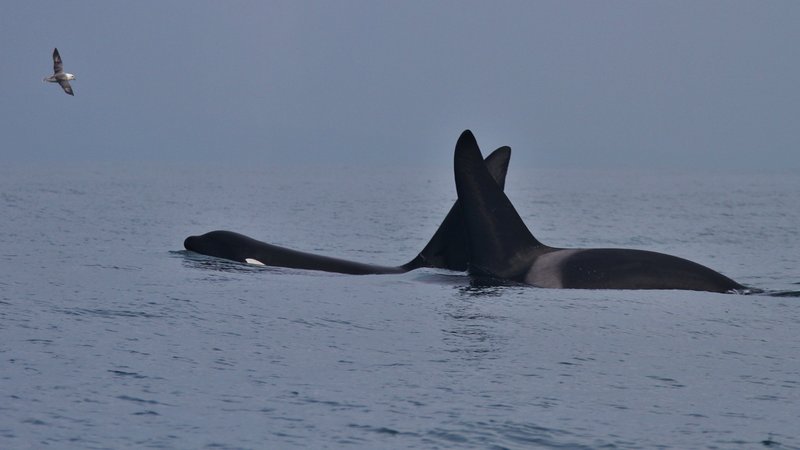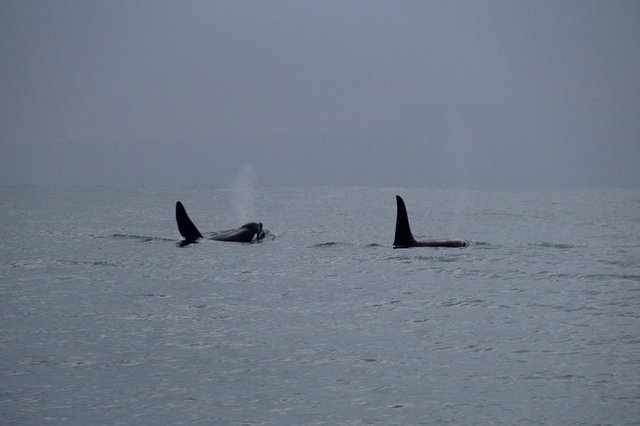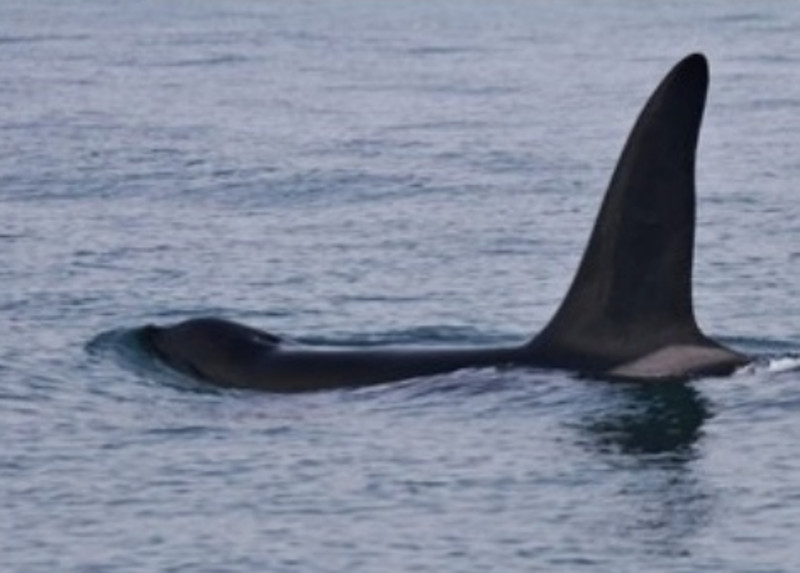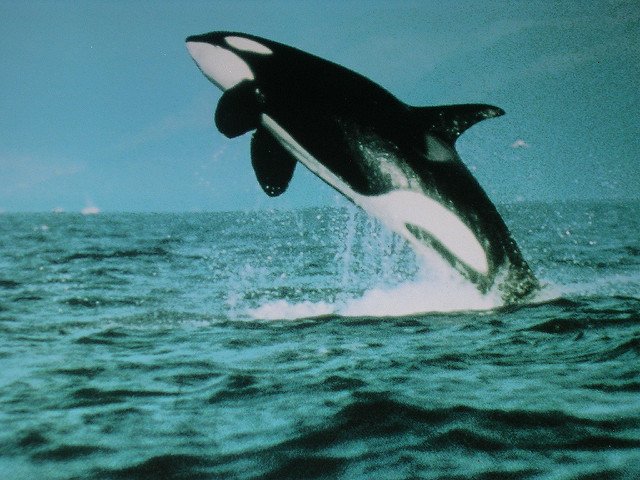Why Orcas Inspire Me: Ireland's Orca Visit and Some Issues Faced by These Animals Today
This post was inspired by a recent sighting of two wild orcas off the coast of Dingle Bay in Kerry, Ireland. I think that orcas (also known as killer whales) are truly awe-inspiring animals, so in addition to describing the sighting itself, I would love to discuss the lives of wild and captive orcas in general, and some of the issues that they are facing today.
On Monday March the 5th, there was great excitement off the coast of Dingle Bay when two famous orcas were spotted by members of the Irish Whale and Dolphin Group (IWDG). IWDG member Nick Massett was the first person to see them. He then called two of his colleagues, Britta Wilkens and Simon Crompton, to undertake a short boat journey with him to watch the whales.

“An early morning text message from Nick Massett usually means something exciting is happening on the cetacean front,” she said. “One of (the orcas) was instantly recognisable by a large chunk out of his dorsal fin: John Coe, a member of the Scottish West Coast Community of Killer Whales and a sometime visitor to our shores.”
The calm oceanic conditions the crew enjoyed on that day added to the magic of their whale encounter. Visibility from the boat was high and the orcas’ powerful blows were clearly audible, in the absence of any adverse wind conditions. “Back home by 11 a.m. – one quick spin and what felt like a foray into a whole different world for ages,” Wilkens remarked. “It was my first ever killer whale encounter by boat: incredible, powerful, pure magic.”


Orcas are one of those animals whose sheer size, agility and grace have inspired countless legends and myths in cultures all over the world. The Tlingit tribe of North America hold a traditional view of orcas as special protectors of humankind. The tribe never hunted these animals, despite being accomplished hunters of several other whale species. At the end of 2017, an enormous 2,000 year-old geoglyph of an orca was uncovered by archaeologists in Peru, South America. The monument is approximately 230 feet long. Researchers from the German Archaeological Institute – who were part of the onsite team – suggested that this discovery attested to the supreme, semi-mythical status of the orca in ancient Peruvian culture.
Wild orcas typically live in tightly bonded matrilineal pods. They remain close to their immediate family members all their lives, and can travel up to 100 miles in a single day. This makes them one of the most widely ranging mammals in the world. Their brains are approximately four times larger than human brains, while MRI scans have also revealed that the lobes responsible for processing complex emotions are significantly larger in an orca’s brain than they are in the brain of a human. Wild orcas’ behaviour around humans has frequently been observed as surprisingly gentle: despite their “killer whale” name, there has never been a recorded incident of a wild orca killing a human being.
One of the most well-known cases was that of Tilikum, an orca who was captured off the coast of Iceland in 1983 at the age of two. At the time of his death on January the 6th, 2017, he had spent most of his life in SeaWorld Orlando. He killed his trainer Dawn Brancheau on February the 24th, 2010, after losing his temper and dragging her underwater during a performance. Brancheau’s tragic death was explored in the 2013 documentary Blackfish. This documentary exposed a number of ongoing health and safety concerns that SeaWorld had failed to address in the lead-up to Brancheau’s death. It also raised many questions about the treatment of orcas and other marine animals at the theme park. Blackfish has been cited by many as the main reason SeaWorld attendance figures and profit margins have witnessed a steep decline over the last few years.
These conditions are virtually never witnessed among orcas who are living in their natural environment. Wild orcas tend to live by a sort of “pod code” that prohibits serious aggression among members of the group. When conflict occurs, they have the option of simply swimming away from the situation until tempers have cooled down. Captive orcas have no such choice in the matter. The typical captive orca tank represents only 0.001 percent of the territory that would be available to them in the wild, so when incidents of aggression occur, the orca who is being attacked has nowhere to go. Morgan, a young female orca living in Loro Parque amusement park in Tenerife, Spain, has been the victim of frequent bullying, physical attacks and even sexual assaults by her tank mates.
The visit of John Coe and his friend to Irish shores – breathtaking as it was – carries an important message about oceanic pollution and overfishing. Irish orca sightings have been steadily declining over the past few years. The number peaked in 2011 with seventeen sightings, and reached just three sightings in 2017. It has long been known among Irish whale watching circles that the pod of nine individual orcas who frequently visit Irish waters may be heading toward extinction, as they have had no new births over the past 25 years.
In January 2016, one of the adult females belonging to this group – known as Lulu – was found dead on the island of Tiree, Scotland. She died after becoming entangled in fishing rope: yet another victim of the “bycatch” phenomenon within the commercial fishing industry. “Bycatch” animals include whales, dolphins, turtles and rays, who – despite not being the intended target species – end up being captured and killed by fishing nets in untold numbers every single year.
A post mortem examination also revealed that Lulu had one of the highest concentrations of toxic pollutants ever recorded in the body of a marine animal. She had been carrying an especially high amount of polychlorinated biphenyls (PCBs). PCBs are man-made chemicals that were once commonly used in the production of electrical equipment. Many countries around the world banned PCBs in the 1970s because of their extremely destructive environmental effects, but a great deal of them remain active in our environment today. Andrew Brownlow, head of the Scottish Marine Animal Stranding Scheme (SMASS), said: “Given what is known about the toxic effects of PCBs, we have to consider that such a high-pollutant burden could have been affecting her health and reproductive fitness.”

SeaWorld responded to criticism over their treatment of captive orcas by ending their captive breeding programme across all of its parks (in 2016) and ending the much-condemned theatrical orca shows in their San Diego park (in 2017). They plan to phase out orca shows in their Orlando and San Antonio parks by 2019. This means that within SeaWorld's parks, no more orcas shall be born into a life of captivity, and eventually, none of their current orca residents will be forced to perform for the sake of human entertainment.
Captive orcas who currently reside in amusement parks around the world are not equipped with the survival skills necessary to survive in the open ocean, so I think the most humane thing that can be done for these animals is to retire them to a spacious sea pen. Here, they could experience a life that will replicate the one they would have in the wild to some extent, while also being supported by humans wherever necessary. A retirement plan of this nature was developed for Lolita, Miami Seaquarium's resident orca, by a U.S. marine advocacy organisation called The Orca Network back in 2014. Lolita has lived in North America's smallest orca tank since 1970, and Miami Seaquarium authorities have sadly given no indication of being willing to improve her living situation.
As for the plight faced by wild orcas, I feel that the best thing each of us can do is to minimise our environmental impact wherever we can. Doing something as simple as refusing plastic utensils, cups or bags while shopping can make a real difference. 8.8 million tons of plastic waste find their way into the oceans every single year, which places an estimated 700 marine species at risk of extinction. By reducing the amount of waste we produce, we can help to change that.
For more information about the IWDG, visit their website or Facebook page.
Thank you for sharing this. What a wonderful experience it must be to see these magnificent creatures in their natural habitat. Retiring all Orcas currently in captivity to spacious sea pens sounds like a great idea to me! Wish everyone would boycott the places where they are still forced to perform!
I know, I would love to be able to see wild orcas one day. ❤ Retiring captive orcas to that kind of environment would be the best thing for them, I think.